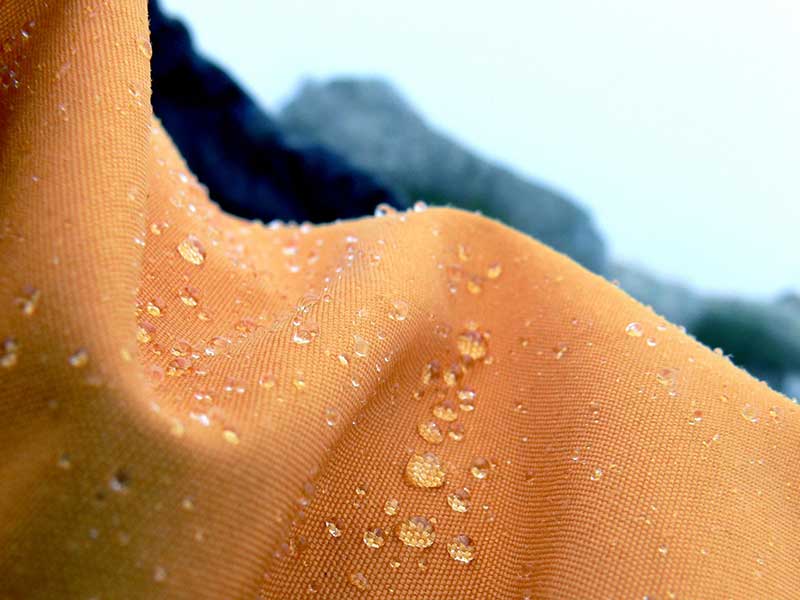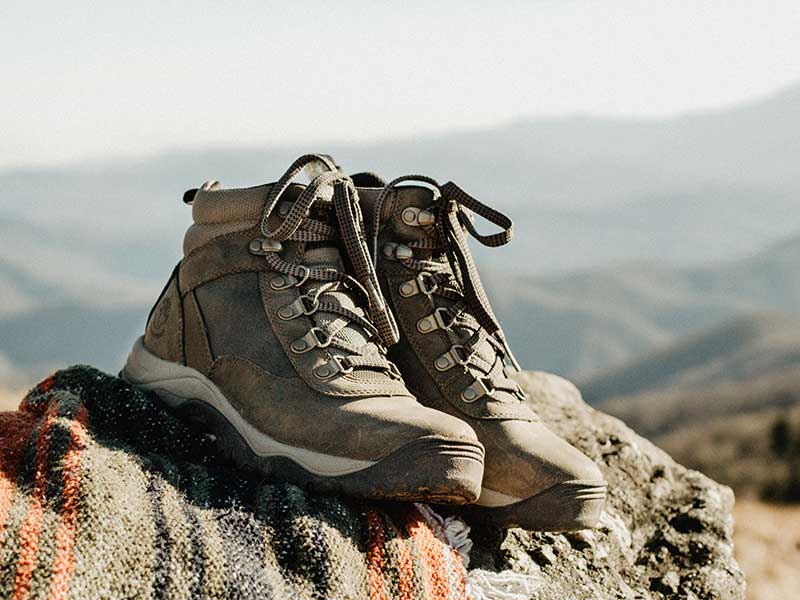How to care for and wash your GORE-TEX equipment
The majority of outdoor clothing is usually marked with the well-known GORE-TEX® membrane to prevent rain or snow from seeping in, and wetting the undergarments. Often, this Gore-tex outer layer Who hasn't soiled a jacket after a fall in the mud? The high price of these garments makes many people doubt how to clean them. Ignorance and fear can lead one to make wrong decisions. It is thought that washing them will cause them to deteriorate more, and their durability will be impaired. However, washing GORE-TEX clothing has the opposite effect. The fabrics are more damaged by soiling, and water tends to seep in more easily. It is therefore clear that GORE-TEX® garments must be cleaned.. But how? Here, we'll show you what steps to take to properly clean outerwear, footwear and gloves.
🧼 Why wash your GORE-TEX?
Because a clean jacket is a "happy" jacket"(and more efficient). Dirt, sweat and other particles can compromise the properties of your clothing, affecting its water resistance and function.
- Benefits of washing your GORE-TEX regularly:
- Maintains the performance optimal.
- Increases service life.
How often should I wash my GORE-TEX garments?
There is no one-size-fits-all answer. Depends on use. If you're trekking in the Pyrenees for a week, you'll probably need to wash it when you get back. Now, if you just did a short hike around your town, you can hold out a little longer.
Of course, GORE-TEX garments should be washed according to time and intensity of use. However, the well-known outdoor clothing brand Arc'teryx proposes that clothing with this membrane should be cleaned after ten to twelve days of normal use. If it is used for a short time, washing it every 20 to 30 days is sufficient. These are approximate numbers, and logic should always be used: if the garment is dirty and wet, it should be cleaned. Depending on the brand of clothes MammutIf necessary, you should clean your GORE-TEX clothing when necessary, but as little as possible. As we can see that the criteria here are disparate, our advice is to use common sense.
- Signs that it's time to wash your GORE-TEX:
- Visible sweat or dirt stains.
- Clothes feel heavier or colder than usual.
- The material no longer repels water as before.
🧥Steps to washing your GORE-TEX (outerwear) at home
So far so good, right? It is very important to keep your GORE-TEX jackets washed, because both durability and waterproofing will benefit. To keep these jackets dry in adverse weather conditions, you should follow the instructions below.
Step 1: Preparation
Always look at the labels! It may sound like a grandmother's advice, but it's essential. But don't worry, I'm going to give you a couple of tips you won't find there:
- Before you startmake sure to:
- Empty all pockets.
- Close all zips. Make sure that all zips, front, pocket and vent zips are closed.
- Adjust straps and belts to avoid damage.
- If you have stubborn stains, don't use stain remover! Apply a little liquid detergent to the stain before washing.
Step 2: Washing
- Load the washing machine with one or two items at a time.
- Use an ordinary liquid detergent, 30 ml is enough!
- Wash at 40 °C.
- Double rinse. Why? To remove residues that may affect the efficiency of the material.
- Dry at low revolution to avoid creasing.
Remember never use washing powder, stain remover, fabric softener and bleach..
🔄 Step 3: Dry and reactivate the DWR treatment
- How to dry? Air dry or tumble dry at low heat.
- Reactivates the DWR (waterproof impregnation) by placing the clothes in the dryer for an additional 20 minutes. If you do not have a tumble dryer, a trick is to iron at a low temperature with a cloth between the clothes and the iron.
How do you know if you need to re-impregnate? It is simple:
- Pour a few drops of water on the surface of your clothes.
- If the water is absorbed, it is time to re-impregnate.
- If the water forms droplets and runs off, everything is in order!
Many GORE-TEX products have an ultra-thin polymer-based water repellent (DWR) treatment applied to the outer shell. The DWR treatment reduces the surface tension of the outer fabric and water simply runs off the surface.

Pro Council 💡 If after a while you notice that your clothes are no longer as water repellent as before, it's time to reactivate or renew the impregnation. There are special sprays and products for this! Brands such as Grangers, Nikwax and Toko sell this type of Sprays for Gore-tex fabrics (view product). Follow the manufacturer's instructions for treatment application.
Please note: Not all GORE-TEX products are identical. For example, GORE-TEX SHAKEDRY™ products should not be treated with DWR impregnation. It is therefore vital to know your equipment.
🥾 Washing of footwear.
It is probably outdoor shoes that suffer the most from dirt. It is therefore very important to take good care of them. Proper cleaning of footwear can certainly improve its durability.. In addition, waterproofing and breathability will be improved. For the cleaning of footwear, each manufacturer's instructions should be followed. However, these are the basic tips to follow. As with outerwear, shoes should never be cleaned with bleach. Footwear should be cleaned by hand. A little patience, a brush or cloth and a little warm water is enough. The shoes or boots should be rubbed carefully to remove stains. Once cleaned, they should be left to dry in the open air. Do not use a hand dryer to provide heat for faster drying. However, there are dryers on the market that are specially designed for drying boots, and they work quite well. As with jackets, trainers can also be dried with a additional water repellent treatment Always follow the manufacturer's instructions.
🧤Washing of gloves.
Many winter gloves have a GORE-TEX membrane to keep your hands warm and dry. These gloves also need to be cared for with care, so that their greatest qualities do not easily deteriorate. First of all, the gloves should be shaken well to remove any dust on the palm or fingers, both inside and out. If the gloves have a large visible stain, a stain remover can be used. After the product has been applied and left to stand for the time recommended by the manufacturer, the garment should be rinsed to remove the stain remover residue. Do not use the washing machine to clean gloves, as they may be damaged. Therefore, they should be washed by hand with a little detergent. Do not use fabric softener, as the protection provided by the gloves may be impaired. And of course, do not use bleach either. For non-leather gloves, you can use the tumble dryer on a low temperature setting. If you don't have one, the drying procedure is as follows. First, gently squeeze the glove from the fingers towards the wrist. Never twist the gloves too tightly. Once they are half dry, put them on so that they gradually return to their original shape. It is not necessary to iron the glove. If the glove does not continue to repel water to the same extent as it did when new, you can apply a specialised treatment.
Adventure after adventure? Keep your GORE-TEX in shape
Just as you prepare for every adventure, your equipment needs preparation. The time you invest in caring for your GORE-TEX translates into better performance, greater durability and ultimately more euros in your pocket in the long run..
- Always keep your GORE-TEX in shape with these steps:
- Visual inspection after each heavy use.
- Periodic cleaning as required.
- Renewal of the impregnation at the right time.
- Professional repairs in case of damage.
ConclusionDon't wait until you're in the middle of a storm in the Sierra Nevada to realise that your gear could have been in better shape. With the right care, that GORE-TEX jacket or those GORE-TEX trousers will be ready for every challenge.
Fastpacking is not about going faster. It's about going lighter.
If you come from classic trekking, this is the next step: learning to move with less weight,
more fluid and enjoying every kilometre more.
Join the channel and start discovering what lightness feels like.

![Gore-Tex / Photo: GeCaHu [CC-BY-SA-4.0], from Wikimedia Commons)](https://travesiapirenaica.b-cdn.net/wp-content/uploads/2019/01/Gore_Tex_by-GeCaHu-CC-BY-SA-4.0-from-Wikimedia-Commons_800x600.jpg)


